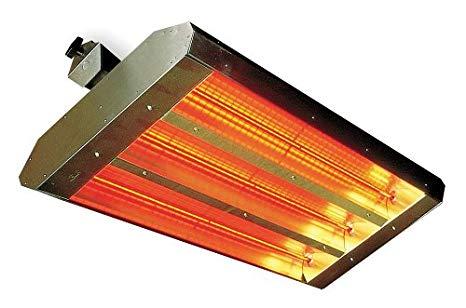Electric infrared heaters are undeniably some of the most convenient and affordable choices of heating devices. They’re often used in workplaces and livestock houses. Many homeowners love them, too, but some are in doubt.
In this article, we’ll talk about the most common reasons why some people are skeptical about infrared heaters. Are these reasons just myths? What are some facts about infrared heating? Let’s find out.
Infrared heaters look hazardous
The typical image of an electric infrared heater shows a reddish lamp that looks like it could burn whatever comes near it. Reasonably, that is indeed what most infrared heaters look like, and it’s understandable why some people stay away from them.
However, to shed some light as to why infrared heaters are designed this way, we must first understand how infrared heaters work. Unlike other types of heaters that heat up air molecules to produce warmth, infrared heaters use light waves that heat up any object they come in contact with. Once heat is produced by an infrared heater’s heating element, the lamp or reflector directs the heat to the surfaces near it.
Is this reflector indeed hazardous? Yes, to a certain degree--in the same way that all types of heaters come with some levels of hazards. To avoid untoward incidents, it’s important to make sure that there’s appropriate clearance between a heating device and any combustible object. Heaters must also be placed at a location where children and pets cannot reach them.
Fun fact: infrared heaters are actually health-friendly. Unlike other heaters that affect a room’s oxygen and moisture levels, infrared heaters do not. Electric infrared heaters, in particular, are highly ideal for prolonged usage since they do not produce any harmful gases. This makes them ideal for a variety of situations, including overnight heating for bedrooms. Electric infrared heaters are also eco-friendly.
They can’t heat up the whole house
Most homeowners prefer heaters that offer powerful heating--the kind that could heat up a whole room or a whole house effectively and efficiently. This is an area where infrared heaters fall short. Since they do not heat up air molecules and they neither have fans to help circulate heat, they aren’t suitable for heating up large spaces.
Infrared heaters can’t achieve what a central heating system can. However, this doesn’t mean that infrared heaters are unusable anywhere. In fact, infrared heaters are some of the most efficient heaters for zonal heating. They can be a perfect alternative heater for specific zones or small rooms, especially because they produce heat instantly. Plus, if you occupy a certain room for only a few minutes or hours, using an infrared heater over other types can save you electricity and money.
Infrared heat dissipates quickly
Once you turn an infrared heater off, the warmth you previously felt will immediately dissipate. That is a fact, and it’s one reason why some homeowners dislike infrared heaters. Since these heaters transfer heat through light waves and do not affect air molecules, the heat cannot be retained once the light waves are turned off.
But on the other side of the coin, infrared heaters have this advantage: they can make you feel warm quickly. Heaters that use convection have to spread heat first before you can notice a significant level of warmth, which implies some waiting time. As for infrared heaters, just turn them on and you’ll get results right away.
Every type of heater has its share of pros and cons. The important thing is to weigh these against your needs, your goals, and also your budget. Hopefully, this article shed some light on some pros and cons of infrared heaters.












No Comments